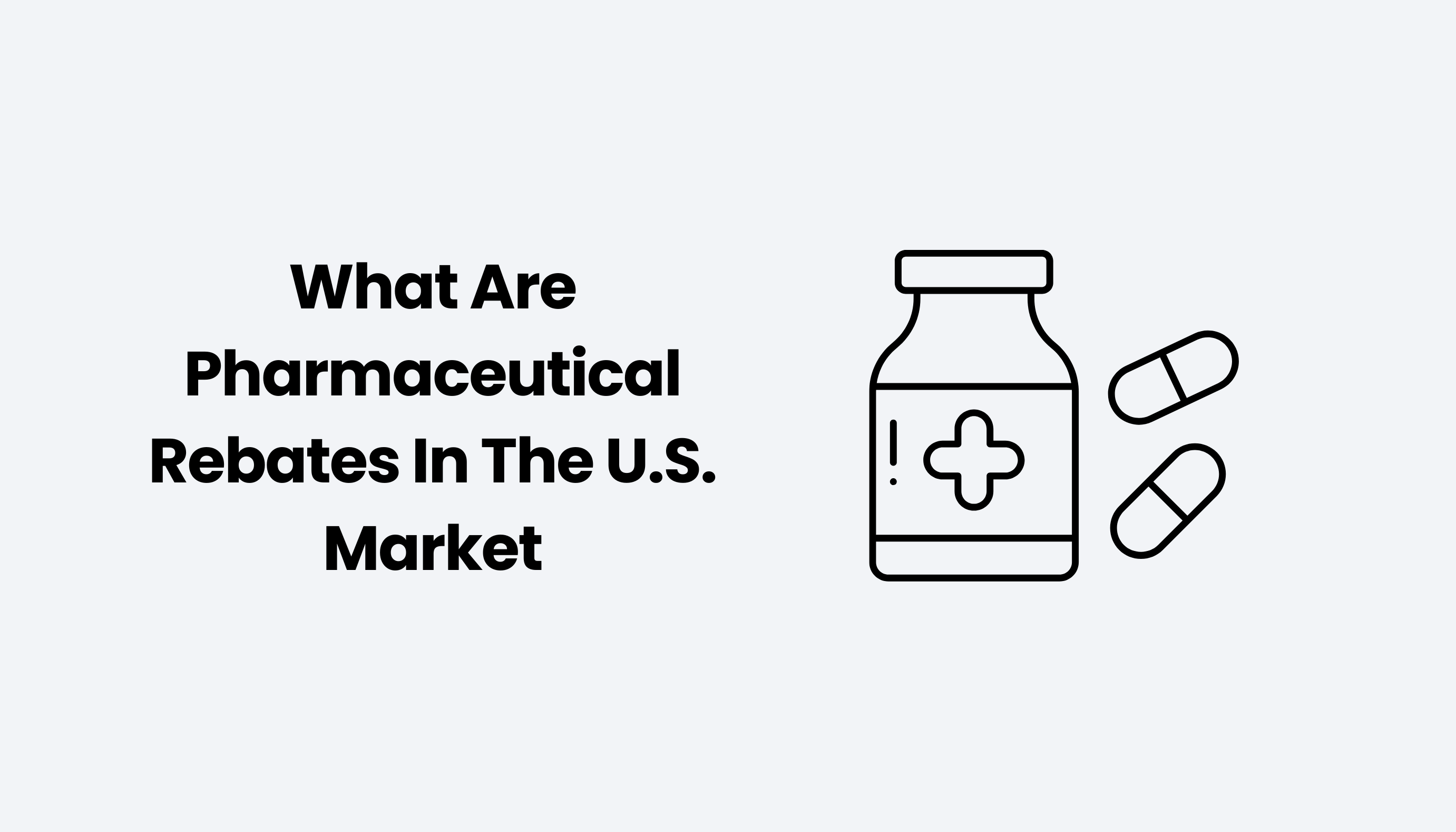What Are Pharmaceutical Rebates In The U.S. Market

The U.S. pharmaceutical landscape operates with a unique rebate structure that connects manufacturers, distributors, pharmacy benefit managers (PBMs), and government programs. Rebates are essential mechanisms that ensure fair pricing, control healthcare costs, and maintain compliance across multiple entities.
Pharmaceutical rebates are more than just financial adjustments — they represent a structured effort to make healthcare more affordable and efficient. Manufacturers ensure compliance and pricing transparency. PBMs manage cost-effective drug distribution and patient access. Government programs make essential medicines accessible to vulnerable populations. Together, they create a system that balances cost control with patient care, ensuring that healthcare remains both sustainable and equitable.
Table of Contents:
- The Basics: Manufacturers and Distributors
- Types of Rebates in the Pharmaceutical Industry
- The Role of Pharmacy Benefit Managers (PBMs)
- Government Rebates: Medicare, Medicaid, and 340B
Jump to a section that interests you, or keep reading.
The Basics: Manufacturers and Distributors
In the U.S., pharmaceutical manufacturers typically sell their products through large distributors. There are three major distributors that dominate the market, along with a few smaller ones.
A common financial transaction in this setup is the chargeback. For example, if a manufacturer sells medicine to a distributor for $100, and the distributor sells it to a contracted customer for $90, the distributor doesn’t absorb the $10 loss. Instead, the distributor sends a chargeback request of $10 to the manufacturer, along with proof of sale showing the product was sold under the agreed contract price.
Chargebacks form the foundation of the rebate ecosystem in the pharmaceutical supply chain.
Types of Rebates in the Pharmaceutical Industry
Pharmaceutical rebates generally fall into three categories:
- Chargebacks – Paid to wholesalers or distributors.
- Commercial Rebates – Paid to Pharmacy Benefit Managers (PBMs).
- Government Rebates – Paid to U.S. government programs such as Medicare, Medicaid, 340B, and Veterans Affairs (VA).
The Role of Pharmacy Benefit Managers (PBMs)
A Pharmacy Benefit Manager (PBM) acts as an intermediary between pharmaceutical manufacturers and insurance plan providers (payers). PBMs emerged as part of the managed care model developed to control rising healthcare costs in the U.S.
Before managed care, insurance companies paid per visit or procedure, often covering unnecessary treatments and increasing overall healthcare costs. To counter this, PBMs were introduced to optimize pharmacy operations and manage prescription drug spending.
PBMs oversee pharmacy networks within specific ZIP codes, negotiate drug prices with manufacturers, and manage coverage based on insurance plans. They are responsible for ensuring that patients receive cost-effective treatment while maintaining compliance with prescribed medical protocols.
If PBMs succeed in keeping costs below budget, they retain the savings, incentivizing them to manage care efficiently.
PBMs have contracts with manufacturers that outline rebate conditions. These contracts may include:
- Volume-based discounts (e.g., bulk purchase incentives).
- Validation rules (e.g., patient must try other drugs before accessing a specific brand).
Each month, PBMs collect claims from pharmacies and send them to manufacturers for rebate payments. Manufacturers then review the contracts, verify claim validity, and issue rebates accordingly.
This structure defines commercial rebates, where payments flow from the manufacturer to the PBM.
Government Rebates: Medicare, Medicaid, and 340B
Beyond commercial rebates, pharmaceutical manufacturers also pay rebates to various government programs that ensure drug affordability for specific populations.
- Medicaid: Supports low-income individuals by offering discounted drug prices, which are subsidized by manufacturer rebates.
- Medicare: Covers senior citizens aged 65 and older, with similar rebate mechanisms that lower overall drug costs.
- 340B Program: Provides discounted drugs to hospitals and clinics serving low-income or uninsured patients.
- VA (Veterans Affairs): Offers discounted healthcare and medications for military veterans.
Manufacturers submit rebate payments monthly or quarterly, depending on sales volume. They must also ensure there are no duplicate rebates, meaning a single drug cannot be rebated under multiple programs simultaneously. Specialized software systems are often used to manage and validate these complex rebate transactions.
Conclusion
The U.S. pharmaceutical rebate ecosystem involves a multi-layered collaboration among manufacturers, distributors, PBMs, and government entities. From chargebacks to commercial and government rebates, each type plays a vital role in maintaining financial and operational balance across the healthcare supply chain.
For global manufacturers — including those based outside the U.S. — understanding and adhering to this rebate structure is crucial for success in the American market.
